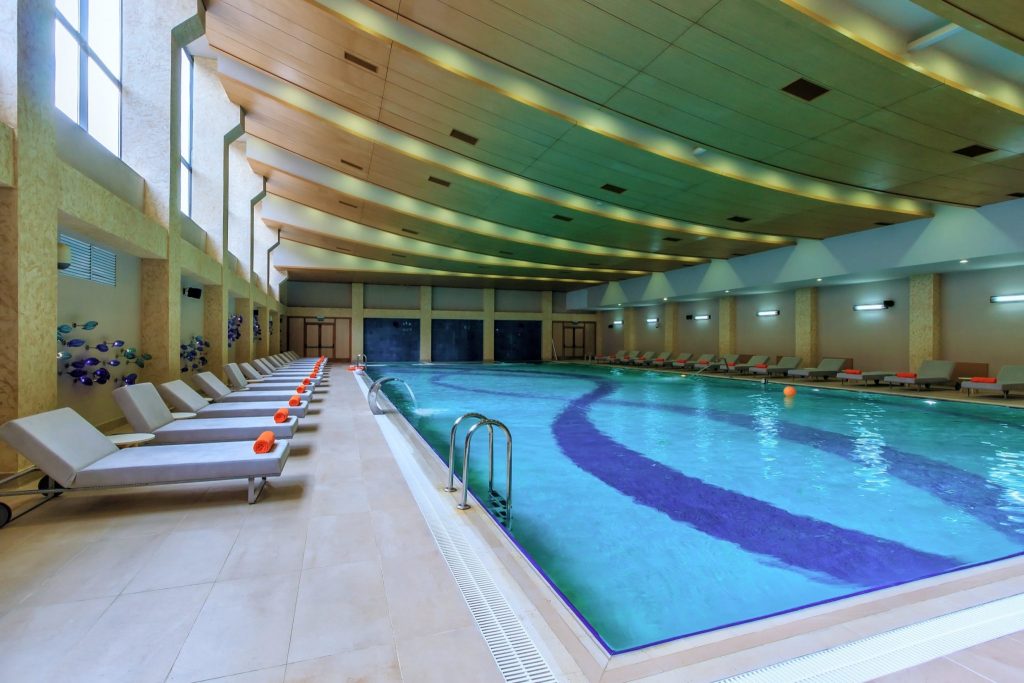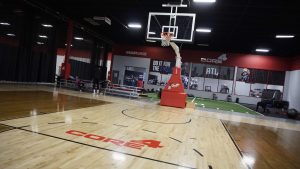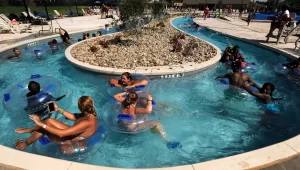How to Care for the Indoor Pool in Your Recreation Center
Due to their year-round convenience, indoor pools are an excellent addition to any recreation center. But caring for an indoor pool comes with its fair share of problems. To prevent water condensation, mold, poor water quality, and other problems that can harm swimmers, indoor pools require careful maintenance. If you are considering adding an indoor pool to your recreation center, Sports Facilities Management provides a few key maintenance tips.
Ventilate
Properly ventilating your recreation center’s pool facility is one of the key ways to ensure your indoor pool is clean and safe. Like outdoor pools, indoor pools need to be “shocked” at least once a week, which means adding enough chlorine to kill any algae and bacteria in the water. When a pool is shocked, oxidation occurs. Essentially, particles of grease, body oils, lotions, and perfumes release into the air in the form of gasses. In outdoor pools, the gasses escape into the atmosphere, but indoors, the gasses simply hit the ceiling and bounce back into the pool, degrading the air and water quality.
To combat the problem of oxidation, indoor pools require proper ventilation. Installing windows and fans in your recreation center’s pool facility is the best way to ensure proper ventilation. Even in the winter months, you should open the windows after shocking the pool so gasses have the chance to escape outside.
Regulate the Temperature of Your Recreation Center
Another important component of running an indoor pool is regulating the temperature of your recreation center’s pool facility. Indoor pools are known for trapping moisture and condensation, causing mold build-up. Ventilation helps prevent condensation, but it does not get to the root of the problem. To combat condensation most effectively, try keeping the temperature of your swimming facility two to four degrees warmer than the pool. When the air and water temperature and similar, condensation is less likely to occur.
Along with regulating the temperature, try covering the pool in off-hours. Covering the pool allows less chance for evaporation, resulting in less moisture in the air. Indoor pools are known for increasing the humidity of recreation centers, but following these two tips will decrease the amount of moisture in the air.
Clean the Pool Regularly
Like any pool, indoor pools require constant cleaning to remove bacteria and prevent algae build-up. At your recreation center, run your pool filter 8-12 hours a day and clean the pool filter with filter cleaner at least every three months. To prevent algae, vacuum the pool as often as possible.






